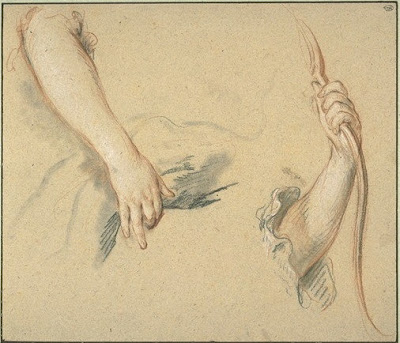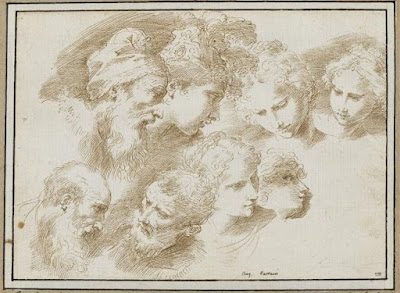 |
| François Lemoyne Study of Arm ca. 1727 drawing Musée du Louvre |
 |
| François Lemoyne Study of Arms ca. 1727 drawing Musée du Louvre |
 |
| François Lemoyne Study of Arm and Hand ca. 1727 drawing Musée du Louvre |
 |
| Charles Le Brun Study of Legs ca. 1665 drawing (colored chalks) Musée du Louvre |
 |
| Charles Le Brun Study of Arm before 1690 drawing Musée du Louvre |
 |
| Donato Creti Study of Eight Heads before 1749 drawing Musée du Louvre |
 |
| Donato Creti Study of Eight Heads before 1749 drawing Musée du Louvre |
 |
| Michel Corneille the Younger Sheet of Head and Hand Studies before 1708 drawing Musée du Louvre |
 |
| Jean-Baptiste Greuze Study of Heads from Trajan's Column, Rome ca. 1755-56 drawing Musée du Louvre |
 |
| Pier Leone Ghezzi Study for Bust of a Prelate (Arm and Shoulders) before 1755 drawing Musée du Louvre |
 |
| Pier Leone Ghezzi Study of Raised Arm before 1755 drawing Musée du Louvre |
 |
| Jean-Baptiste-Henri Deshays Study of Model - Shoulder and Neck ca. 1750 drawing Musée du Louvre |
 |
| follower of Leonardo da Vinci Studies of Right Leg ca. 1490-1520 drawing Musée du Louvre |
 |
| Alphonse Legros Torso Studies before 1896 drawing Musée d'Orsay, Paris |
 |
| Angela Grauerholz Lessing 1992 C-print Musée National des Beaux-Arts du Québec |
 |
| Stephen Rhodes Vacant Portrait 2011 oil and acrylic on canvas private collection |
"Further, I will consider to what end a profound knowledge of anatomy is useful. A good grasp of anatomy gives us the advantage that we learn from it the knowledge of muscles, where they originate and where they end, how they move and how they change in their movements, how they recede and protrude again, and how a body should be divided so as to be well proportioned. Knowledge of anatomy shows us the difference between the bodies of a man and a woman, and the difference in proportion between children and adults. Moreover, we learn from it how always to find a straight perpendicular or plumb line in the figure of a human being, and also an isosceles triangle, a square, a perfect circle, and many other useful things. To acquire this knowledge, Michelangelo and many other excellent men dissected several bodies, and split muscles apart to learn about them. I often regret that in this city the artists are not given so much freedom, and that they do not have at their disposal a freely accessible dissecting room which could further this useful science. By contrast, all the other arts, even including the school for marital arts, maintain their position. But our art, which gives to Leyden (the birthplace of all great minds) greater renown than any other art, is not given any freedom for further expansion."
– Philips Angel, from In Praise of Painting (1642), translated by Hester Ysseling (2000)